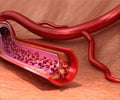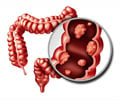Novel biomarker of blood vessel activity that can help optimize the timing of anti-cancer drugs has been found, says study.
- A biomarker named CD109 can now visualize blood vessel activity
- Angiogenic inhibitors allow blood vessels to return to their normal state so that the anticancer drugs can penetrate the tumor more effectively
- CD109 can recognize this “window of opportunity” aiding optimal delivery of anti-cancer drugs
"Vascular normalization by angiogenesis inhibitors, such as vascular endothelial growth factor (VEGF) signaling inhibitors, is a promising method for improvement of chemotherapy However, it is unclear how we can recognize the 'window of opportunity' for the tumor vascular normalizing period for effective timing of anticancer drug treatment. Therefore, biomarkers delineating this window are essential," explained Nobuyuki Takakura, MD, PhD, Professor, Department of Signal Transduction, and Research Institute for Microbial Diseases, Osaka University, Osaka, Japan.
Researchers showed that proliferating vascular endothelial cells (ECs) are different from dormant ones. They measured PSF1 gene promoter activity, which is associated with DNA replication and rapid proliferation of somatic cells by using enhanced green fluorescent protein (EGFP) tat fluoresced to sow gene activation. Since normal skin ECs are dormant, no EGFP signals were observed in normal adult skin vasculature.
After subcutaneous injection of tumor cells,
- Some ECs in and near the tumor showed expression of EGFP
- ECs that were high in EGFP expression were larger and more complex than cells that did not express EGFP
Moreover, CD109 expression in ECs increased three to five days after injection of bevacizumab into mice that bore a human colorectal adenocarcinoma, coinciding with normalization of tumor vessels. The researchers thus distinguished between proangiogenic ECs and quiescent ECs by their PSF1 gene promoter activity. Therefore, it can be concluded that CD109 expression in ECs marked normalized or silenced blood vessels in the tumor vasculature.
Reference:
- Goel S, Wong AH-K, Jain RK. “Vascular Normalization as a Therapeutic Strategy for Malignant and Nonmalignant Disease.” Cold Spring Harbor Perspectives in Medicine. (2012); 2(3):a006486. DOI:10.1101/cshperspect.a006486.
Source-Medindia
















